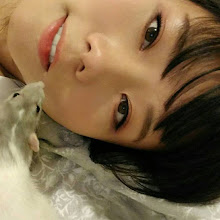MEMORIES OF THE DEAD
There is one fact that never changes; everything that lives die at certain point. No matter if you accept death or not, death has always been a large part of human civilization and always will. Different people dealt with death on their own ways; some believe in afterlife while the others don't, and some are tormented by the memories of the dead while the others accept the death and lives along with it. Here is some of the methods that some people dealt with the memories of the past ones.
2750 BC
 Egyptian Tombs
Egyptian TombsAncient Egyptians believed that the pharaoh became Osiris, king of the dead, after his death. Even after pharaoh became the king of the dead, some part of spirit would remain within his body. Thus if the corpse was not treated with proper care, the owner of the body would not be able to carry out his duties as Osiris. If this happened, the cycle would be broken and disaster would befall egypt. In order to prevent such a catastrophe, each dead pharaoh's body was carefully mummified. Everything the king would need in his after life was provided in his grave, such as vessels of gold, furniture, food and doll-like representations of servants to serve him. Pyramids were built in order to protect the tomb.
200 AD
 Catacomb
CatacombThe word catacomb comes from Greek kata kumbas, "near the low place" and originally it meant a certain burial district in Rome. But it can refer to any network of caves, grottos, or subterranean place that is used for the burial of the dead. A catacomb would have many loculi, or stone shelves where bodies were laid; if the person was considered important, him and his family would have a separate room where their coffins were placed. Their room would also be decorated; paintings of biblical stories were often found on the ceiling and the walls. However catacombs weren't places that you would like to return again; luculi was just a invention to maximize the use of the space.
1500 AD
 Shrunken Head
Shrunken HeadJivaro Indians warriors in Ecuador and Peru bring his enemy's head to his village after the war. He would carefully take the skull out, throwing it into a river as a sacrifice to the anaconda, Ani. He would then boil the skin in water for about 2 hour so that the hair won't fall out. After the boiling the head is about 1/3 of its original size. In order to shrink it even more, the warrior uses hot stone and hot sand to heat the head, and hangs it over a fire. as a result the head is shrunken into the size of an orange. The purpose of making a such trophy was in order to paralyze the spirit of the enemy and prevent them from harming the murderer as a revenge. Jivaro Indians would substitute the human head with sloth's head if he had not time to cut off his victim's head during the war. Thus shrunken heads were treated as an object that proved the owner's power, rather than treated with respect in memorial way.
The footage show the world's smallest shrunken head, which was made from a pygmy (mature male's average height was 4' 11"(150cm) or less).
1972 AD
 "Frozen Sleep"
"Frozen Sleep"As technology developed, the defintion of death have become even more ambiguous; an organism is 'clinically dead' when it had stopped breathing, while it is 'biologically dead' when its brain cells die because of lack of oxygen (which usually happens after clinical death). Today, both the legal and medical communities use "brain death" as a legal definition of death. However many others have opposed against this idea, according to their belief (especially religions).
Alcor Foundation is an organization who brought up a new way to deal/define someone's death. Located in Arizona, United States, Alcor has started to freeze dead bodies, or "patients" as they call them, believing that the patients will be revived again when the technology is advanced enough in future. There were 5 people whose bodies went through replaceing the blood with an anti-freezing solution to keep the cells safe during the freezing process. Now, there are 838 'patients' who are waiting for the future technology to thaw out and revive them. Alcor Organization also offers neuropreservation, which is to preserve just the brain of a person (the Alcor Foundation claim that it is all it takes to preserve a human being).
In 2002, a popular science magazine 'New Scientist' offered one reader the chance to have their body frozen right after the death. The competition promised to have the winner's corpse "healed and revived" when and if the medical technology allows. Normally this process would cost approximately 49,000USD.
2008 AD
 Underwater Graveyard
Underwater GraveyardNeptune Memorial Reef is located at the coast in Florida, 15m below the surface of water. The ashes of the dead is mixed with cement and placed at the underwater temple; along wit the structures and sculptures. The CEO of the company claims that the graveyard is designed in contemporary way and aesthetically, and wishes that the place would become the most visited diving spot in the planet. Anyone is allowed to dive into graveyard located in 16 acres of open water, and the company offers glass bottom boat tours, snorkeling, and scuba diving.
This is a home video was filmed and uploaded by a visitor. As you can see the diver is carrying a spearfish,
which could mean that he had been spearfishing around the memorial reef. Is this inappropriate, or does this fit to the company's intention of making the place more open and public to visitors?
The ways of facing death is has been and will keep changing as long as the humans exist; perhaps the debate will settle on the day when a dead speaks to the living.

No comments:
Post a Comment